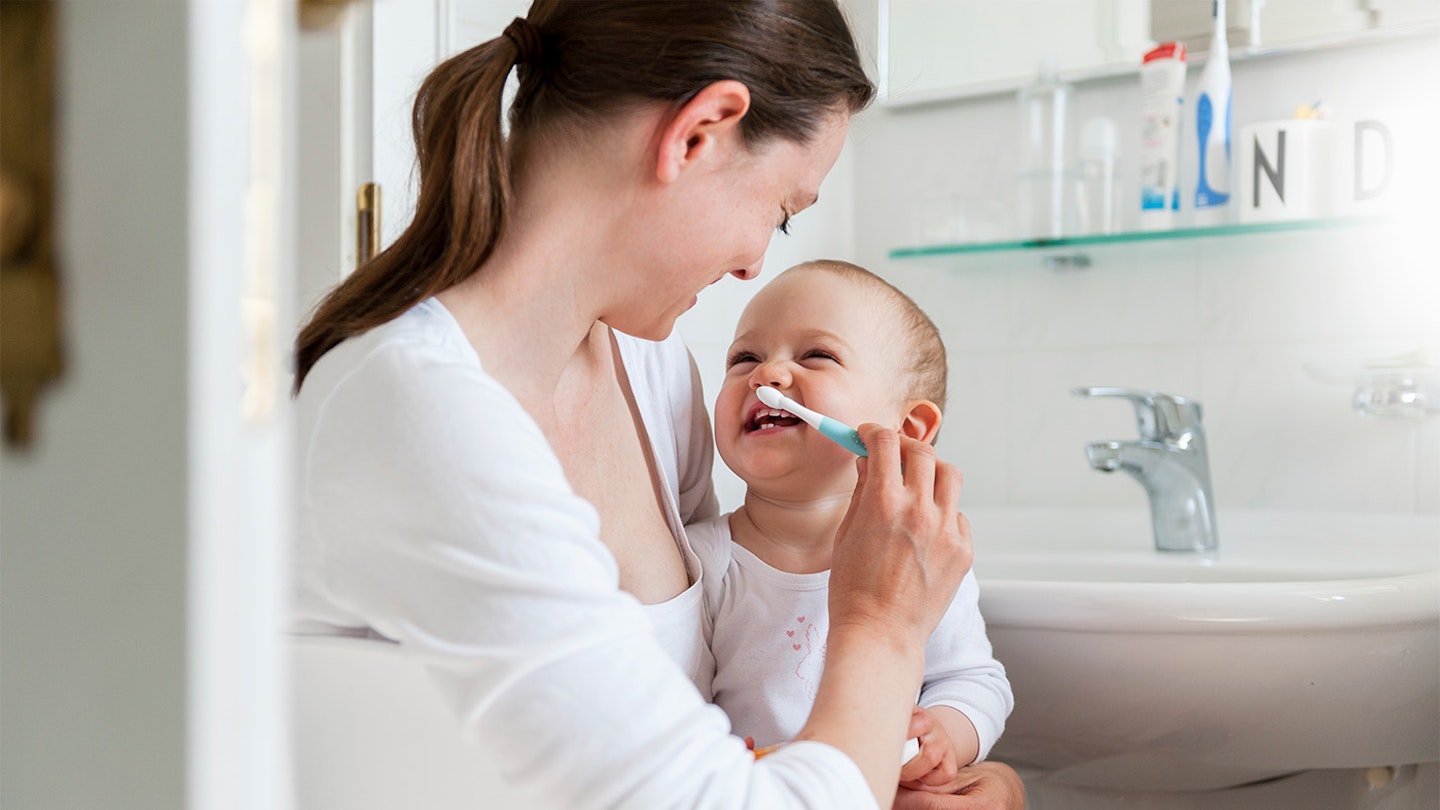It’s so important to look after your baby’s tiny teeth, even if they’ve only just started poking through. And the sooner you start brushing their teeth, the more chance they’ve got of getting used to the sensation of having their teeth brushed, and the more they’ll be used to the habit of brushing twice a day when they get a bit older.
If you’re unsure of how to get started, we’ve put together a simple guide on how to brush your baby’s teeth, from when to start, to how to brush and what to think about when choosing a toothpaste and suitable toothbrush.
When to start brushing your baby’s teeth
According to the NHS, you should start brushing your baby’s teeth as soon as you start to see them, not just when baby is regularly eating sweet treats such as honey. Even if you feel like you’re not really doing much, it’s a good idea to start brushing them twice a day to make it part of your baby’s daily routine, and get them used to the new sensation and taste of toothpaste.
"You can start brushing the teeth as soon as the first primary tooth erupts through the gums. There’s no need to brush the gums if no teeth have come through. The first teeth to come through will normally be the lower front two teeth around 6-10 months, but don’t be alarmed if this happens slightly earlier or later." Says dentist, Dr. Rishi Nanavati on behalf of Nelsons® Teetha®
It’s also a good idea to let your baby see you and other members of your family brushing their teeth too, as it sets a good example, and helps them understand this is a part of everyone’s daily routine.
Top tips for brushing your baby’s teeth
• When you first start brushing their teeth, you only need to use a tiny smear of toothpaste which is suitable for babies. You can use a number of tools to brush your baby's teeth including a gentle toothbrush suitable for babies, a finger toothbrush or even a flannel to start with. Once your toddler is over 3, you can use more of a pea sized amount of toothpaste to brush their teeth. Shop the best baby and toddler toothbrushes here.
• Brush their teeth in small circles, covering all surfaces of the teeth. Encourage your child to spit out the toothpaste afterwards if they can. There is no need to rinse their mouth out with water afterwards, as this will wash away the fluoride.
• Some baby and toddler toothpastes can taste sweet, so many kids try to eat the paste instead of brushing with it. That’s why it’s so important to supervise and help your tots learn to brush their teeth properly.
• As they get older, it may become more of a chore to get your children to brush their teeth, so you might want to give them some incentives, and perhaps make it into a fun game. There are plenty of fun timers you can buy so they know they’re brushing their teeth for the right amount of time. You could also put on their favourite song while they brush their teeth!
Popular articles to read next
Dentists give their top tips for looking after their toddler’s teeth
How to tell if your baby’s teeth are growing in the right order
Dr Hanna Kinsella: Looking after your teeth and gums in pregnancy
